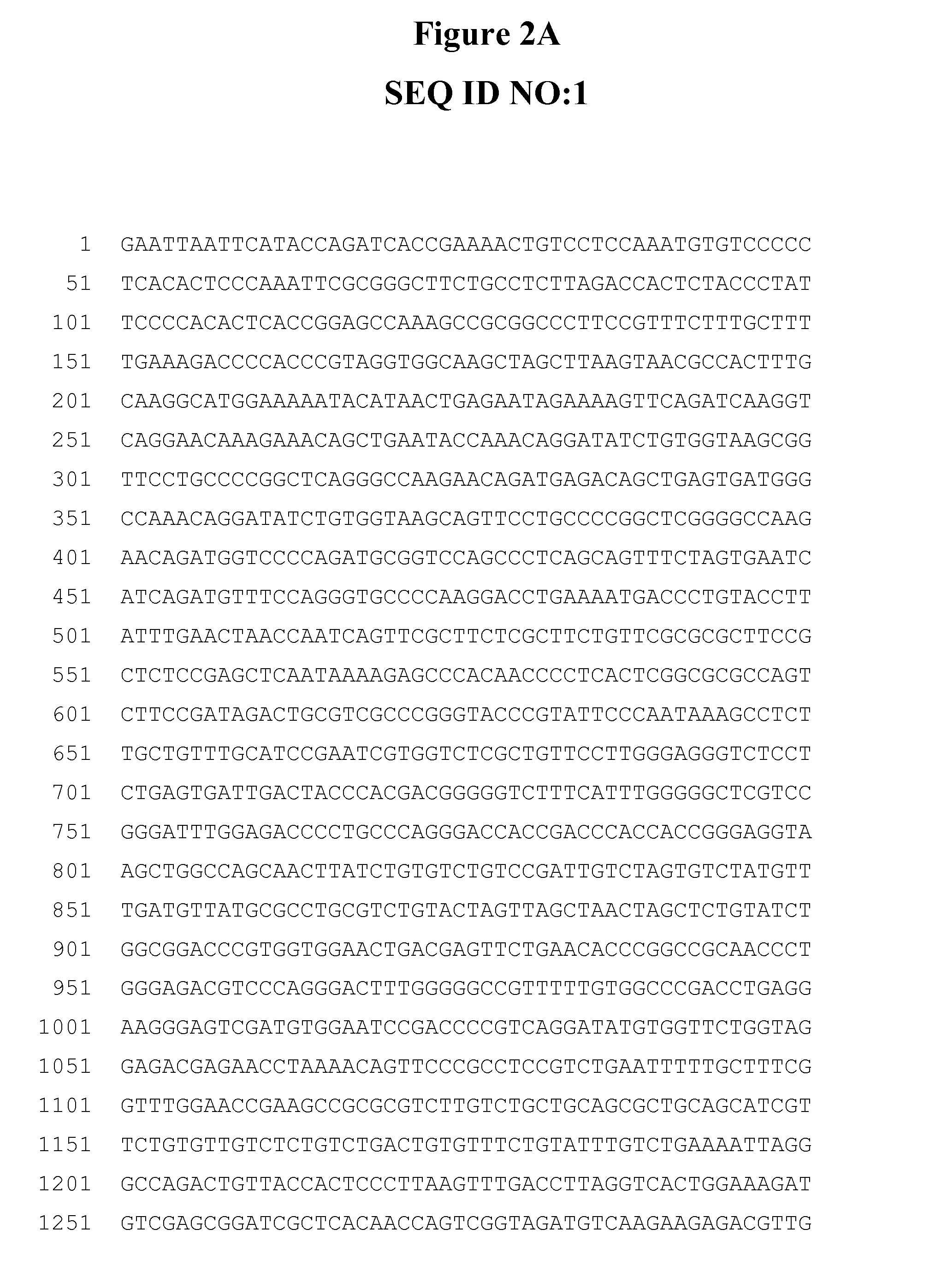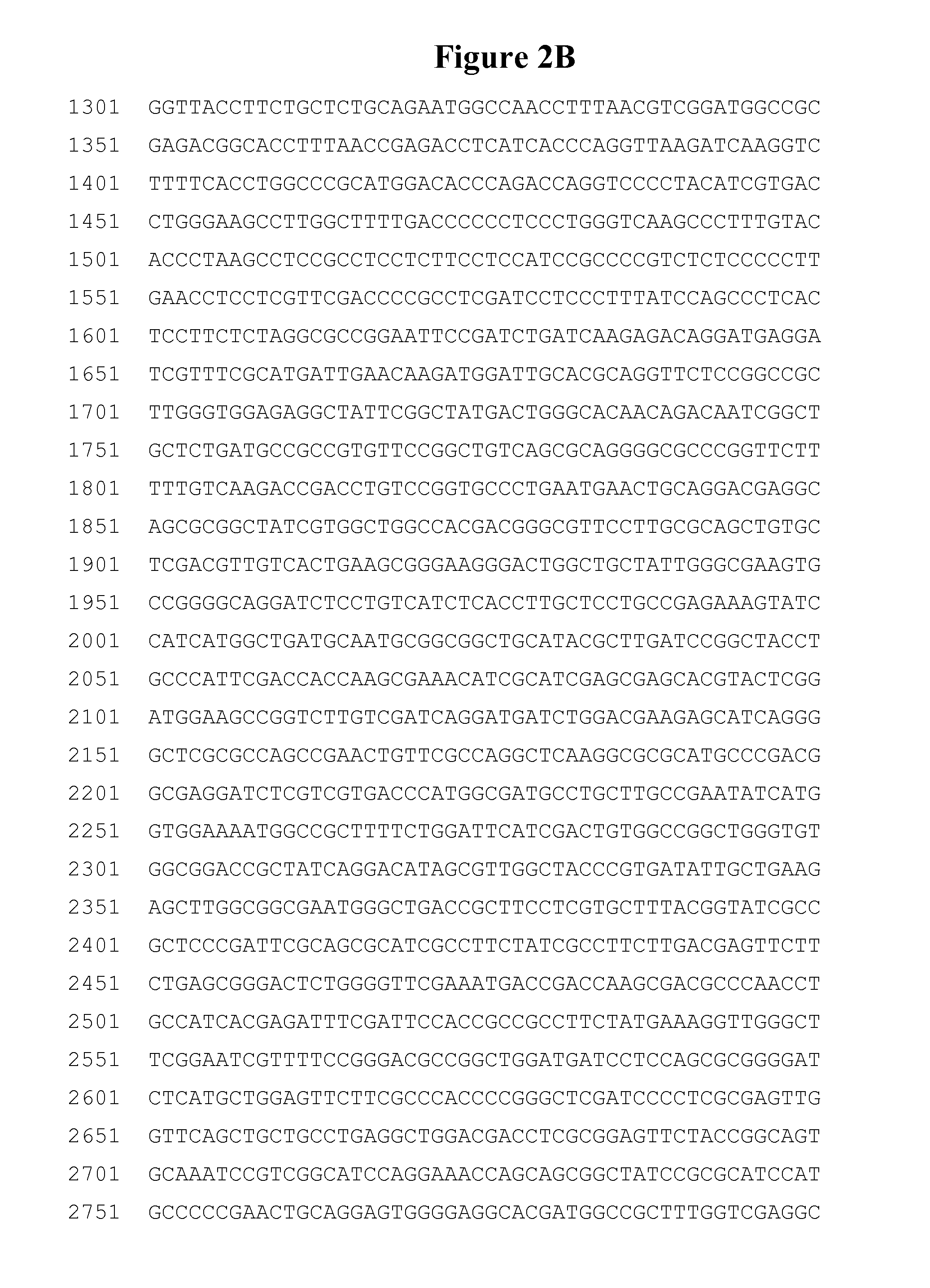Retrovirus-based genomic screening
a genomic and retrovirus technology, applied in the field of retrovirus-based genomic screening, can solve the problems of not being able to replicate the actual expression and processing of genes, algorithms, no matter how powerful, and splice variants and genes expressed from alternative start sites may be missed the algorithms,
- Summary
- Abstract
- Description
- Claims
- Application Information
AI Technical Summary
Benefits of technology
Problems solved by technology
Method used
Image
Examples
example 1
Vector Construction
[0116]A gene construct was developed to determine if genomic regions of DNA can be placed into retroviral vectors, undergo processing in the cell to splice out introns to create a “cDNA like sequence” and be expressed in a host cell. To create the test vector the genomic clone of the bovine α-lactalbumin was used. α-Lactalbumin is a milk protein that is expressed at high levels in the mammary gland of cattle. The α-lactalbumin gene was placed behind the CMV promoter in the LNC based retroviral backbone. This construct is designated pα-LA. The construct contains all four exons and three introns of the bovine α-lactalbumin gene in addition to a couple hundred bases of 3′ flanking region. This region of the gene is approximately 2.3 kb in length. A diagram of the final gene construct is provided in FIG. 1. The sequence (SEQ ID NO:1) of the vector is provided in FIG. 2.
example 2
Generation of Cell Lines Stably Expressing the MoMLV gag and pol Proteins
[0117]Examples 2-5 describe the production of pseudotyped retroviral vectors. These methods are generally applicable to the production of the vectors described above and below. The expression of the fusogenic VSV G protein on the surface of cells results in syncytium formation and cell death. Therefore, in order to produce retroviral particles containing the VSV G protein as the membrane-associated protein a two-step approach was taken. First, stable cell lines expressing the gag and pol proteins from MoMLV at high levels were generated (e.g., 293GPSD cells). The stable cell line which expresses the gag and pol proteins produces noninfectious viral particles lacking a membrane-associated protein (e.g., an envelope protein). The stable cell line was then co-transfected, using the calcium phosphate precipitation, with VSV-G and gene of interest plasmid DNAs. The pseudotyped vector generated was used to infect 293...
example 3
Preparation of Pseudotyped Retroviral Vectors Bearing the G Glycoprotein of VSV
[0120]In order to produce VSV G protein pseudotyped retrovirus the following steps were taken. The 293GPSD cell line was co-transfected with VSV-G plasmid and DNA plasmid of interest. This co-transfection generates the infectious particles used to infect 293GPSD cells to generate the packaging cell lines. This Example describes the production of pseudotyped LNBOTDC virus. This general method may be used to produce any of the vectors described herein.
[0121]a) Cell Lines and Plasmids
[0122]The packaging cell line, 293GPSD was grown in alpha-MEM-high glucose medium containing 10% FCS. The titer of the pseudo-typed virus may be determined using either 208F cells (Quade, Virol. 98:461 [1979]) or NIH / 3T3 cells (ATCC CRL 1658); 208F and NIH / 3T3 cells are grown in DMEM-high glucose medium containing 10% CS.
[0123]The plasmids utilized were pLBC-L2HCF, pLBC-M4HCF, pLNC-L2LC and pLNC-M4L (See Example 1). The plasmid ...
PUM
| Property | Measurement | Unit |
|---|---|---|
| Length | aaaaa | aaaaa |
Abstract
Description
Claims
Application Information
 Login to View More
Login to View More - R&D
- Intellectual Property
- Life Sciences
- Materials
- Tech Scout
- Unparalleled Data Quality
- Higher Quality Content
- 60% Fewer Hallucinations
Browse by: Latest US Patents, China's latest patents, Technical Efficacy Thesaurus, Application Domain, Technology Topic, Popular Technical Reports.
© 2025 PatSnap. All rights reserved.Legal|Privacy policy|Modern Slavery Act Transparency Statement|Sitemap|About US| Contact US: help@patsnap.com



